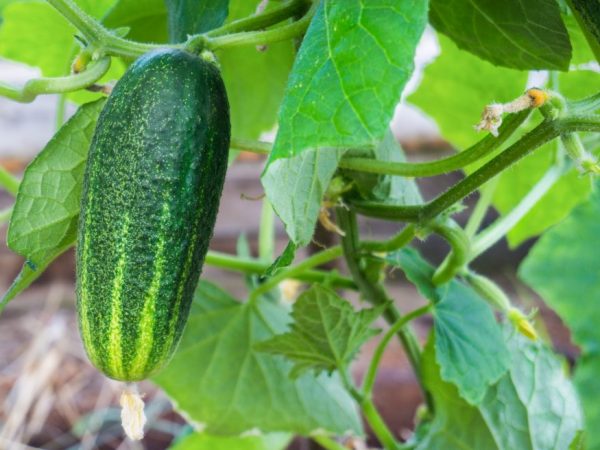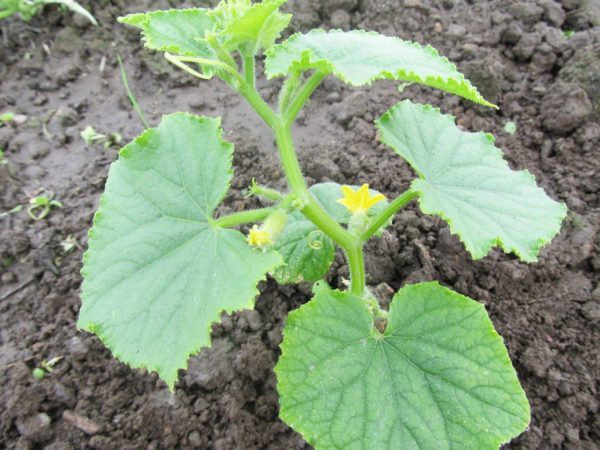Description of Shosh cucumber
If you are a lover of delicious vegetables, then Shosha cucumber is just the variety you need. According to many farmers, such a vegetable crop is unpretentious in cultivation and has good taste. Cucumbers have long taken root in our national dishes. Not a single feast is complete without such a vegetable culture.

Description of Shosha cucumber
Description of the vegetable crop
Cucumber Shosha f1 is a hybrid type of vegetables bred by Russian breeders. The culture can grow in all regions of the country. The climate of the central regions of the country is especially suitable for this type of vegetables.
Unpretentious and resistant to weather changes, vegetables can be grown in three ways:
- in greenhouse conditions;
- landing in open ground;
- growing on a windowsill at home.
Plant characteristic
It has a female flowering type and is a self-pollinating plant. The flowers are bright yellow in appearance, resembling a crown. The Shosha f1 cucumber grows up to 1.5 m in height. Begins to bear fruit 38-45 days after planting.
Each node is capable of forming up to 3-4 zelents. The characteristic indicates that the vegetable crop has a strong root system, which supplies the entire plant with nutrients. The yield is relatively high, from m2 to 18 kg of vegetables.
Fruit characteristics
In the description, Shosha f1 cucumbers are delicious crunchy vegetables that will please you with their sweetish taste and complete lack of bitterness. With a longitudinal section of the void, a lot of seeds are not formed, but they taste good:
- the color is dark green;
- the surface is bumpy;
- the peel is thin, pleasant to the taste;
- the pulp is sweetish, light green in color;
- fruit weight 50-60 g;
- oblong shape, size about 11 cm in length and 3 cm in diameter.
Advantages and disadvantages
The advantages of Shosha f1 cucumbers, first of all, are its excellent taste, pleasant taste, they are suitable for eating raw and for the production of pickles. Everyone knows that F1 can be used to make excellent pickles and marinades. Another of the main advantages is the high yield.
People grow the Shosha f1 cucumber for their own consumption. They are also grown on an industrial scale for sale or processing in production, where they are made into pickles. Vegetable culture has a high degree of keeping quality and retains its external and internal qualities for two weeks after harvest. That is why Shosha cucumbers are excellently transportable and can be exported to other countries.

This variety will provide you with a good harvest.
Also, on top of that, the vegetable is used in cosmetology and folk medicine. Cucumber masks cleanse and refresh the complexion, relieve swelling of the lower eyelid. The variety has no negative sides. Disadvantages can be singled out only in the case of a person's individual preferences for some taste.
Seedling preparation
You can plant cucumbers in two ways: plant seeds or grow seedlings, and then plant them in open ground.To grow seedlings, we need small boxes, which we fill with earth. We put seeds for seedlings on the bottom. A period of 4 weeks must pass before disembarkation. Planting seedlings in the same way as seeds in open ground should not be earlier than mid-April.
In order for the plant to cope with the temperature drop, the seedlings are tempered in advance. The boxes with sprouts should be taken out for an hour to fresh air, and then left completely for half a day. This is how we prepare the sprouts for possible frost. A hardening procedure should also be carried out with the seeds: for this, they are first soaked in copper sulfate, and then wrapped in a damp towel and placed in the refrigerator for 2 hours.
Planting cucumbers
Before sowing seeds, you should fertilize the soil and saturate it with oxygen. For this, the soil is dug up, fertilizing with humus or chicken droppings. You can start planting a vegetable crop when the air temperature stabilizes and the thermometer reads 15-17.
It is necessary to plant seeds according to the scheme of no more than 4-5 plants per m2, so that they do not interfere with each other during growth. To plant the shoots, we need to dig small holes. At the bottom of the grooves, we will make a drainage of sand.
Care
After you have sown the seeds, future seedlings will need proper care:
- moderate watering is required every day;
- weeding your sprouts several times a week in order to provide the root system with oxygen;
- you should also monitor the correct growth of the plant, unnecessary ovaries should be cut off;
- with intensive growth, it should be flavored with liquid fertilizers;
- the plant also requires a garter.
Pests and diseases
If the leaves of the cucumbers began to fade and turn yellow, then this is a reason to be wary. The plant may have undergone a fungal infection that affects the overall development of the plant and the quality of the fruit. Mold causes diseases such as Nematoda and Cladosporium.
In order to get rid of fungal infections, the seeds should be treated with fungicides before planting or fertilized with a solution of copper sulfate in a ratio of 1:10.
Vegetable crops are also susceptible to pest attacks. Aphids and Leafworms can slow down the growth and development of the plant. In the fight against harmful insects, pesticides and folk remedies are used: treatment with garlic infusion or manganese solution.


